For decades, the United States has considered the Islamic Republic to be among the greatest threats to its interests and allies in the Middle East. Successive presidents, both Democrats and Republicans, have cited Iran’s nuclear program, support for terrorism, meddling in the Middle East and imprisoning American citizens on trumped up charges. Since the 1980s, U.S. forces deployed in Iraq, Lebanon, Saudi Arabia and Syria as well as Afghanistan have come under attack by Iran’s surrogates and allies. Washington has charged that hundreds of Americans have been killed in firefights, suicide bombings, improvised explosive devices and assassinations. Tehran has claimed, in turn, that U.S. forces have assassinated a top military commander, sank or disabled warships, and shot down a civilian passenger plane. U.S. forces have also attacked Iranian proxies in Iraq and Syria.
Washington’s top concerns about Iran have included:
- Increasingly accurate ballistic missiles with a range of up to 2,000 kilometers (1,250)
- Drones provided to Russia and tens of millions of dollars in arms to militant proxies in Iraq, Lebanon, the Palestinian territories, Syria and Yemen
- Aggression at sea, including seizure of U.S. drones and provocations of U.S. naval forces in the Persian Gulf
- Cyberattacks on the U.S. government, infrastructure, and private businesses
- Plots to kill current and former U.S. officials in retaliation for the 2020 assassination of General Qassem Soleimani
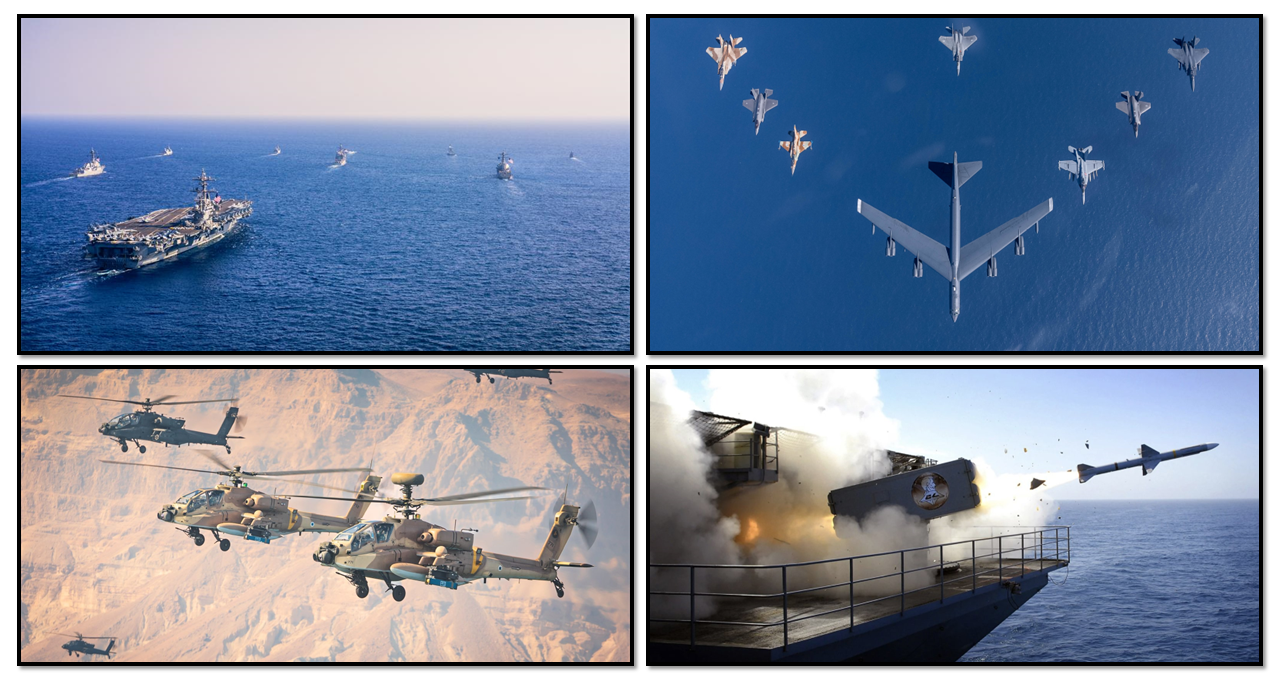
Like his three predecessors, President Joe Biden has repeatedly vowed that Iran will never obtain a nuclear weapon. “The only thing worse than the Iran that exists now is an Iran with nuclear weapons,” he said in July 2022. In the same interview with Israeli television, he said the use of force was a “last resort.” Yet his diplomatic initiative to revive the historic nuclear deal—brokered between Iran and the world’s six major powers in 2015 but abandoned by President Trump in 2018—deadlocked after 17 months of talks launched in April 2021.
“We continue to believe that diplomacy presents the most attractive option, but we also agree with our Israeli partners that we shouldn’t take anything off the table,” State Department Spokesperson Ned Price warned on Jan. 9, 2023. Biden faced pressure, at home and abroad, to do more to contain Iran’s program as Tehran increased the enrichment of uranium, which could be used to fuel a nuclear weapon, and installed more faster and efficient centrifuges for enrichment.
In early 2023, Iran would still need up to a year, or possibly two, to assemble a bomb and a warhead with a missile—if Iran made the political decision to cross the nuclear threshold, according to Israeli estimates. In January, Lt. Gen. Aviv Kochavi, the retiring head of the Israeli Defense Forces, claimed that Iran already had enough uranium that, if enriched further, could fuel four nuclear weapons.
Iran also posed a threat to the U.S. homeland and American partners in the Middle East. Tehran is “becoming more aggressive and more capable in their nefarious activity than ever before,” FBI Director Christopher Wray told the Senate Committee on Homeland Security and Governmental Affairs on Nov. 17, 2022. “They employ a growing range of tactics to advance their interests and to harm the United States.”
Under Biden, the U.S. and Israel have accelerated the pace of joint military exercises.
- November 2022: U.S. and Israeli forces conducted a three-day air force exercise that simulated an attack on Iran’s nuclear sites.
- January 2023: Israeli F-35 stealth fighters participated in drills with six U.S. F-15 fighters. The goal was to simulate attacks deep into enemy territory.
- January 2023: Israeli and U.S. forces conducted a four-day exercise, dubbed "Juniper Oak 23," the largest joint military exercise to date. The live-fire drill included 42 Israeli aircraft and 100 U.S. fighters, bombers and other warplanes as well as a U.S. carrier strike group.
- February 2023: U.S. and Israeli forces conducted a joint exercise called "Juniper Falcon" to strengthen coordination in several fields, including aerial defense and cyber warfare.
- February 2023: U.S. Marines and Israeli forces conducted a ten-day exercise in Israel called “Intrepid Maven 23.2” to enhance collaboration. The drill included 200 Marines and sailors.
- March 2023: The U.S. and Israeli air forces conducted a two-week drill in Nevada called “Red Flag” to enhance collaboration in several areas, including attack operations and refueling. Nearly 100 aircraft would take off twice a day during the drill, the U.S. Air Force said.
- July 2023: The U.S. and Israeli air forces conducted a joint exercise called “Juniper Oak” to boost attack capabilities on “strategic targets in the depth.” They also simulated “achieving aerial superiority” and “cyber defense against a variety of threats,” according to the IDF.
- July 2023: The United States, Britain, and Bahrain conducted a naval drill in the Persian Gulf near the Strait of Hormuz. The exercise, called Sentinel Shield, included a U.S. P-8A Poseidon anti-submarine aircraft. The countries conducted reconnaissance and practiced interoperability.
- July-August 2023: The U.S. Navy Fifth Fleet and the Israeli Navy conducted a two-week maritime drill in Haifa, Israel to enhance “cooperation and operational readiness.” The annual exercise included more than 50 U.S. troops and focused on “explosive ordnance disposal, mine countermeasures, maritime and global health management, underwater construction, maritime surveillance and vessel boarding procedures.”
U.S. warplanes often conducted patrols with partner forces, which showcased the “ability to combine forces to deter and, if necessary, defeat our adversaries,” Lt. Gen. Alexus Grynkewich, the top U.S. Air Force officer in the Middle East said after two B-52s flew near Iran in September 2022. “Threats to the U.S. and our partners will not go unanswered.”
- Jan. 27, 2021: B-52 flight to the Persian Gulf
- March 7, 2021: B-52 flight to the Persian Gulf
- Oct. 30, 2021: B-1B flight to the Persian Gulf, the Red Sea and the Suez Canal
- Nov. 11, 2021: B-1B flight to the Red Sea
- Feb. 14, 2022: B-52 flight to the Persian Gulf and the Red Sea
- March 29, 2022: B-52 flight to the Persian Gulf and the Red Sea
- June 8, 2022: B-52 flight to the Persian Gulf and the Red Sea
- Sept. 4, 2022: B-52 flight over the eastern Mediterranean, the Arabian Peninsula and the Red Sea
- Nov. 10, 2022: B-52 flight to the Middle East
- March 12, 2023: B-52 Flights to the Middle East
- June 8, 2023: B-1 Flights to the Persian Gulf
In January 2023, the mounting tensions were reflected in the largest U.S.-Israeli military exercise ever conducted. It was carried out by land, sea and air over four days. “More than 6,400 American troops and more than 1,500 Israeli troops conducted long-range strikes, suppression of enemy air defense, electronic attacks, offensive counter and air interdiction, and air operations in the maritime domain,” said General Michael Kurilla, commander of U.S. Central Command. “Juniper Oak 23,” a live-fire drill, included 42 Israeli aircraft and 100 U.S. warplanes -- including F-35 stealth fighters and B-52 bombers -- as well as a U.S. carrier strike group and Special Operations Forces. “The scale of the exercise is relevant to a whole range of scenarios, and Iran may draw certain inferences from that,” a U.S. official told NBC News. The exercise also deployed two KC-46 air refueling tankers, which can be used to support a long-range bombing mission.
Juniper Oak 23.2 has just begun... pic.twitter.com/DN8tVsGT3D
— U.S. Central Command (@CENTCOM) January 24, 2023
The escalating tensions since the 1979 revolution are in stark contrast to the warm ties between the United States and Iran during the monarchy. President Richard Nixon’s administration (1969-1974) cultivated a close relationship with Mohammad Reza Shah Pahlavi. Nixon and his successors – both Republicans and Democrats – considered Iran to be the primary guarantor of U.S. interests in the region and a bulwark against Soviet expansion. In the 1970s, the United States sold oil-rich Iran military equipment worth billions of dollars. Tens of thousands of U.S. technicians deployed in Iran to train local armed forces and maintain weapons. The U.S. Embassy in Tehran was a sprawling 27-acre compound.
Relations soured after Iranian students seized the U.S. Embassy and 52 diplomats in 1979. Washington broke off relations with Tehran in 1980. The United States allied with Iraq’s Saddam Hussein during the eight-year war with Iran. Washington provided intelligence to Iraqi forces who used chemical weapons to kill thousands of Iranians. Since the mid-1980s, Washington and Tehran have made sporadic diplomatic overtures, with mixed results. In the mid-1980s, they traded arms for American hostages in a covert operation that was the most controversial decision of the Reagan administration.
In 1997, President Mohammad Khatami called on both nations to “bring down the wall of mistrust,” as the Clinton administration lifted sanctions on Iranian carpets, pistachios, and caviar. In 2013, President Barack Obama and President Hassan Rouhani launched direct diplomacy that produced the 2015 nuclear deal involving five other major powers. President Trump withdrew from the deal in 2018 and imposed more than 1,500 sanctions. The following are key remarks by U.S. officials on the Iranian threat since 2021.
President Joe Biden
In an interview with Israeli Channel 12 News on July 13, 2022: “The only thing worse than the Iran that exists now is an Iran with nuclear weapons.” The United States would use force “as a last resort.”
Special Envoy for Iran Robert Malley

In an interview with Foreign Policy on Nov. 30, 2022: “We'll have the sanctions, pressure, and diplomacy. If none of that works, the President has said, and, as a last resort, he will agree to a military option because if that’s what it takes to stop Iran from acquiring a nuclear weapon, that’s what will happen. But we’re not there.”
Secretary of State Antony Blinken
In a tweet on Aug. 4, 2022: “Our message to Iran is clear: we will not tolerate threats of violence against Americans — and that certainly includes former government officials. Any attack would be met with severe consequences.”
In comments during the J Street National Conference on Dec. 4, 2022: “Our countries [Israel and the United States] participate regularly in joint military exercises, research, weapons development. We hold regular strategic dialogues. And this cooperation allows us to collaborate in countering a range of regional threats, none graver than those posed by Iran. The Iranian regime routinely threatens to wipe Israel off the map and continues to provide weapons to terrorists and proxies like Hizballah and Hamas that remain motivated, like Iran, by the rejection of Israel’s right to exist.
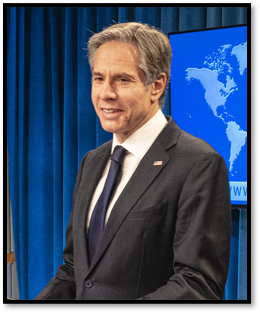
“In recent months, more and more countries are realizing that – what we have long known about the Iranian regime’s propensity to sow violence and instability.
“We see this daily, as the regime is once again viciously cracking down on peaceful protesters at home; killing hundreds of his own people, including scores of women and children; and locking away thousands more in its brutal prisons. At the same time, the regime is arming and training Russian forces with drones, drones that President Putin is using to kill Ukrainian civilians and destroy the infrastructure that provides millions of families with heat, with water, with electricity, just as winter is setting in.
“The United States is committed to standing with the Iranian people, especially women, as they demonstrate extraordinary courage in standing up for their rights. We are licensing technology so that Iranian citizens can communicate with one another, as well as remain connected to the outside world, despite the regime’s constant internet blockages and shutdowns. And we’re coordinating with allies and partners to sanction those responsible for the abuses against Iranian civilians, including the killing of Mahsa Amini.”
“We continue to believe that diplomacy is the best way to prevent Iran from obtaining a nuclear weapon. But should the Iranian regime reject that path, its leaders should make no mistake that all options are on the table to ensure that Iran does not obtain a nuclear weapon.
“We will continue to consult closely with European allies, with Israel, with partners in the region, and colleagues in Congress on the way forward.”
In an interview with Al Arabiya on Jan. 29, 2023:
Q: I wanted to start with Iran. The administration said that this is not the right time to go back to the JCPOA. Your President described it as dead. Yet, you don’t prefer the military option. How can you stop Iran from acquiring a nuclear weapon?
Blinken: “First, Iran had an opportunity to get back into the JCPOA at the end of this past summer. Unfortunately, they rejected what was on the table and had been agreed to by everybody. Their either wouldn’t move forward with it. Now our focus is on the many things that have happened since, including the horrific repression of the Iranian people on the streets of Iran as young people, women in particular, have been standing up for their basic rights, and very important communities across Iranian society are doing the same thing and are being repressed violently by the regime.
At the same time, we’re also seeing Iran support Russia in its war of aggression against Ukraine, providing it with drones and potentially other weapons systems. So that’s where the focus is and that’s the concern of many countries around the world.
At the same time, yes, we continue to believe that the most effective way to deal with the international community’s concerns about Iran’s nuclear program is through diplomacy. Diplomacy is never off the table. But President Biden has also made clear that we’re determined that Iran not acquire a nuclear weapon, and every option remains on the table to ensure that that doesn’t happen. But our preferred path would be diplomacy.”
Q: Including military option?
Blinken: “Everything is on the table.”
Q: You talked about the regime. The regime has been executing demonstrators after a sham trial. How can you support people who have been calling for help actually from the West and particularly from the United States?
Blinken: “We have been, with many other countries, standing up and speaking out for those who are simply trying to have their voices heard and their rights upheld. We’ve gone after those who have been involved in repressing them, and through sanctions, through designating them in various ways. We’ve sought to help the Iranian people be able to continue to communicate with each other as well as with the rest of the world through communications technology. And of course, we continue to look for ways to disrupt the malicious activities that they’re engaged in.
But I think there’s tremendous solidarity around the world with the Iranian people, who are simply trying to have their basic rights respected by the regime.”
Q: So is this military maneuvering or exercise with the Israelis and other people in the Gulf meant to deter Iran activities in the region?
Blinken: “All of our military efforts are designed with the idea of deterrence in mind – that is, to try to make sure that a would-be aggressor thinks twice, thinks three times, and then doesn’t do it. That’s what deterrence is all about. And it’s important to be able to demonstrate that and to make sure that you’re ready if aggression comes. And if deterrence doesn’t work, that you’re also in a position to effectively defend yourself.”
Q: The United States always support people who want to change the regime that oppresses them. Why not the case with Iran?
Blinken: “We support the Iranian people, but these decisions are theirs. They’re not ours. They’re not anyone else’s. One of the things that we don’t want to do is to somehow make this about us. That’s exactly what the Iranian regime wants. They want to say to their own people, “Oh, no, this is somehow the work, the design of some outside power,” the United States or someone else. It’s not. It reflects a profound misunderstanding of their own people if they believe that somehow we’re responsible for this, and it reflects a profound weakness. They’re afraid of their own people.”
In remarks with Israeli Prime Minister Benjamin Netanyahu on Jan. 30, 2023: “We agree that Iran must never be allowed to acquire a nuclear weapon, and we discussed deepening cooperation to confront and counter Iran’s destabilizing activities in the region and beyond. Just as Iran has long supported terrorists that attack Israelis and others, the regime is now providing drones that Russia is using to kill innocent Ukrainian civilians.
In turn, Russia is providing sophisticated weaponries to Iran. It’s a two-way street. Russia’s ongoing atrocities only underscore the importance of providing support for all of Ukraine’s needs – humanitarian, economic, and security – as it bravely defends its people and its very right to exist, a topic that we also discussed today.”
Gen. Michael Kurilla (Commander of Central Command)
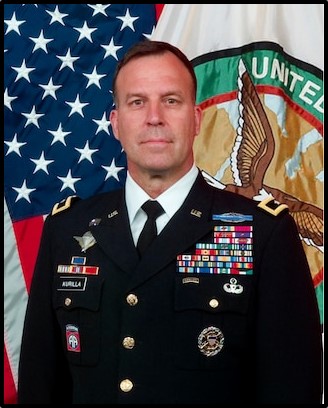
In an interview with Al Arabiya on May 12, 2022: “I view Iran as the most destabilizing force in the Middle East. The United States' position is that we will not allow a nuclear Iran. However, our concerns about Iran go beyond its nuclear capability.”
In testimony to the Senate Armed Services Committee on Feb. 8, 2022:
Q: What is your assessment of U.S. national security interests associated with the growth of Iranian influence in the Middle East?
Kurilla: “My assessment is that Iran’s negative influence in the region continues to grow and is incompatible with U.S. national interests, as well as those of our allies and partners. Iran views the U.S. as its greatest enduring threat and continues a multifaceted approach to remove U.S. forces from the region while avoiding escalation into major conflict. The risk of miscalculation and escalation remains high.”
Q: If the United States returned to compliance with the Joint Comprehensive Plan of Action (JCPOA), what concerns, if any, would you have for regional security?
Kurilla: “Iran is, in my view, the single biggest contributor to instability in the region and any agreement must fully prevent Iran from obtaining a nuclear weapon. Without knowledge of the specific terms of ongoing diplomatic negotiations, it is premature to assess the outcomes on regional security. Renewed negotiation efforts must consider the significant changes that have occurred in the security and geopolitical environments since the 2018 American withdrawal from the agreement.”
Lt. Gen. Alexus Grynkewich (Central Command Air Force Chief)
“You can assume we are keeping a very close eye on Iranian facilities out there, continuing our evaluation of what it means, what Iran is using it for, what options we might have for those facilities.”
The United States “is trying to ensure that the Iranians understand that even though the US doesn’t have the same amount of forces in the region as it had previously, we can still bring those forces back very rapidly.”
“We have an ironclad commitment to Israeli security... there are a lot of our Arab partners in the region as well, where we intend to maintain a true partnership – and not just a transactional relationship – and stitch the region together in a more integrated fashion. The more we can do that, the more of a deterrent effect that has on Iran because they see that they are facing a unified front.”
“Our job is to ensure that Iran does understand we can bring forces in here quickly to respond to any provocation. There are plenty of options on the table with respect to preventing Iran from getting a nuclear weapon. Our job is to ensure that the military options are well thought out and robust.”
“On the military side, we are equally concerned about other asymmetric capabilities which the Iranians have… The first are their air threats, including ballistic missiles, UAVs and cruise missiles. That’s a very complex combination of capabilities.”
State Department Spokesperson Ned Price
During a press briefing on Jan. 9, 2023: “We continue to believe that diplomacy presents the most attractive option [to curb Iran’s nuclear program], but we also agree with our Israeli partners that we shouldn’t take anything off the table. We haven’t taken anything off the table. And as we meet with our Israeli partners, one of the many issues we discuss is the most – the various means by which we can see to it that Iran never acquires a nuclear weapon.”
FBI Director Christopher A. Wray
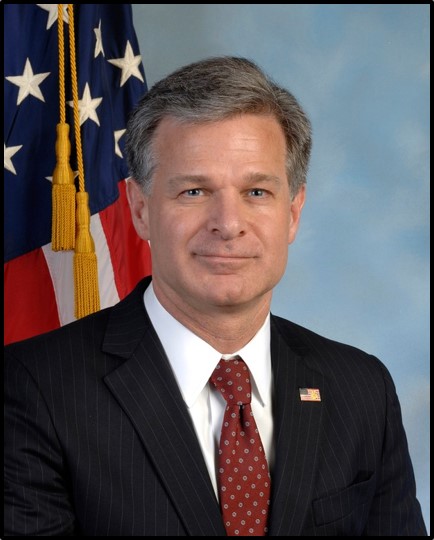
In testimony to the House Committee on Homeland Security on Nov. 15, 2022: “Iran and its global proxies and partners, including Iraqi Shia militant groups, continue to attack and plot against the United States and our allies throughout the Middle East in response to U.S. pressure. Iran’s Islamic Revolutionary Guard Corps-Qods Force (“IRGC-QF”) continues to provide support to militant resistance groups and terrorist organizations. Iran also continues to support Lebanese Hizballah and other terrorist groups. Hizballah has sent operatives to build terrorist infrastructures worldwide. The arrests of individuals in the United States allegedly linked to Hizballah’s main overseas terrorist arm, and their intelligence collection and procurement efforts, demonstrate Hizballah’s interest in long-term contingency planning activities here in the Homeland. Hizballah Secretary-General Hassan Nasrallah also has threatened retaliation for the death of IRGC-QF Commander Qassem Soleimani. This threat was exemplified in 2022, when the Department charged an Iranian national and member of the IRGC, working on behalf of the Qods Force, with a plot to murder a former National Security Advisor.
Secretary of Defense Lloyd Austin
Remarks made at the AIPAC Political Leadership Forum on Jan. 10, 2023: “And going back to my days at CENTCOM, I have consistently said that the greatest threat to Israeli security, and to the region, is the prospect of a nuclear-armed Iran.
“We fully understand the dangers of the Iranian government’s destabilizing actions—including its support for terrorism, its dangerous proxies, and its threats to wipe Israel off the map.
“Unfortunately, Iran has repeatedly refused to engage in meaningful diplomacy on the nuclear front, and now they are taking actions across numerous fronts that make diplomacy even harder. We continue to believe that diplomacy is the best way to prevent Iran from getting a nuclear weapon.
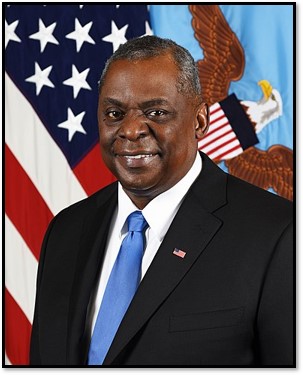
“But let me be clear. The United States will not allow Iran to acquire a nuclear weapon.
“And if Iran isn’t willing to engage seriously, then we will look at all the options necessary to keep the United States secure. Now, the Iranian government’s recent outrages have only deepened our conviction and concern. The regime has killed, beaten, and jailed its own citizens for daring to speak out against its repressive rule.
“And we’re deeply moved by the courage of the Iranian people in standing up for their basic rights.
“But Iran is also stoking instability across the region—including its support for terrorists and militias, its proliferation of drones, its menacing cyber activities, its maritime aggression, and its continued threats against foreign officials. So Iran’s reckless actions don’t just threaten Israel. They endanger the entire Middle East and beyond, including by supporting Russia’s cruel targeting of civilians in Ukraine. And increasingly, U.S. partners understand the importance of a regional approach to this kind of shared danger.”
At the Manama Dialogue on Nov. 20, 2021: “America’s commitment to security in the Middle East is strong and sure. So we’ll defend our interests in this region. And we’ll continue to evaluate the right mix of forces to bolster our deterrence against Iran. We’ll protect our forces from attack by Tehran or its proxies.
“The United States remains committed to preventing Iran from gaining a nuclear weapon. And we remain committed to a diplomatic outcome of the nuclear issue. But if Iran isn’t willing to engage seriously, then we will look at all the options necessary to keep the United States secure.”
“Yet Iran presents us all with serious security challenges that go beyond its nuclear program. Iran stokes tensions in this region and beyond, and that undermines peace and stability for us all.
“Now, Iran’s neighbors have tried to talk and improve relations. We fully support those efforts. And we urge Iran to do its part, and to take steps to reduce violence and conflict. But whatever Iran decides, we will continue to work closely with our partners. Iran should have no illusions that it can undermine our strong relationships in this region. And we will defend ourselves, and we will defend our friends, and we will defend our interests.
“That includes tackling the dangerous use of unmanned aircraft systems. Iran’s proliferation of one-way, attack UAVs is a constant threat to American troops, and a hindrance in the fight against ISIS. And as we’ve seen in Iraq, and Saudi Arabia, and elsewhere, many of our partners face the same threat every day.”
CIA Director Bill Burns
In an interview with PBS NewsHour on Dec. 16, 2022: “And what's beginning to emerge is at least the beginnings of a full-fledged defense partnership between Russia and Iran, with the Iranians supplying drones to the Russians, which are killing Ukrainian civilians as we speak today, and the Russians beginning to look at ways in which, technologically or technically, they can support the Iranians, which poses real threats to Iran's own neighborhood, to many of our friends and partners in Iran's neighborhood as well.
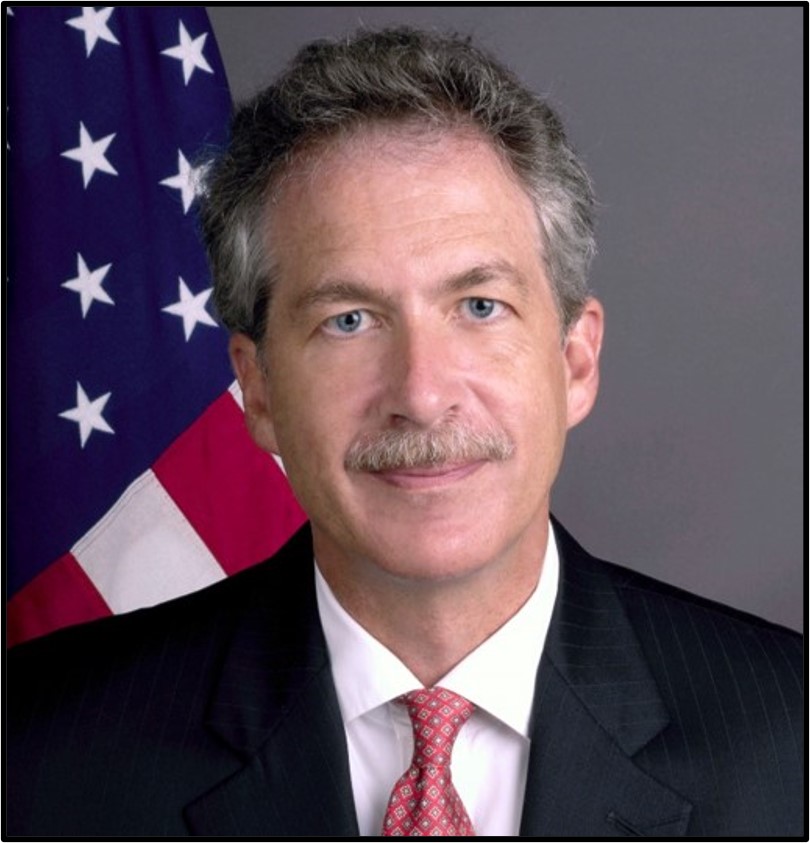
“[The relationship is] already having an impact on the battlefield in Ukraine, again, costing the lives of a lot of innocent Ukrainians.
“And I think it can have an even more dangerous impact on the Middle East as well if it continues. So, it's something that we take very, very seriously.”
At the Aspen Security Forum on July 20, 2022: “I think there are at least two dimensions of Iran's nuclear program that are particularly concerning right now. The first is, is the amount of time it takes them to produce the fissile material, the highly enriched uranium you need for a single nuclear weapon. Under the terms of the JCPOA, the Comprehensive Nuclear Agreement, which the last administration pulled out of several years ago, that breakout time to produce that amount of fissile material was a little more than a year. Today, after the U.S. withdrawal from the JCPOA and Iran, moving away from you know, its compliance with the agreement, enriching to 60 percent, resuming enrichment activities at Fordow, the nuclear site dug into--pretty deep into--a mountain in Iran, usually expanding the amount of the stockpile of enriched uranium that they have well beyond the constraints in the Comprehensive Nuclear Agreement, beginning to work again on advanced centrifuges which speed up their ability to enrich especially to higher levels as well, for all those things. I mean, that's a concern because now that same breakout time can be measured not in a year plus but in weeks.
“The second dimension though, is how long it would take if the Iranians resumed an effort to build a weapon, nuclear device, and their--our best intelligence judgment is that the Iranians have not resumed the weaponization effort that they had underway up until 2004 and then suspended so that's something obviously we at CIA and across the U.S. intelligence community keep a very, very sharp focus on. But the trend lines are quite troubling.”
“I don't know if it's a greater threat [than the nuclear program], but it's certainly an increasingly significant threat as well. They have the biggest arsenal of missiles of anyone in the Middle East right now. And you know, it's a mark of the development of their armed drone system that you have the Russians now trying to acquire some as well. So those are both significant concerns.”
Chairman of the Joint Chiefs of Staff General Mark Milley
In testimony to the Senate Armed Services Committee on Apr. 7, 2022: “Iran is likely to remain a significant regional threat to the United States and our partners and allies. Through its support of terrorist activities and a proxy army inside the borders of its neighbors, along with its ballistic missile programs, Iran seeks to revise the Middle East regional order and balance of power in Iran’s favor. Iran has continued to develop its nuclear program as leverage towards that end. Furthermore, if not constrained through a new diplomatic agreement, their continued nuclear program threatens the emergence of a regional arms race. Additionally, Iran continues to openly threaten to assassinate current and former members of United States Government and our military, which is unacceptable.”
Director of the National Counterterrorism Center Christine Abizaid
In testimony to the House Committee on Homeland Security on Nov. 15, 2022: “Iran continues to encourage and support plots against the United States at home and abroad, especially in the Middle East. Iran and Lebanese Hizballah have remained intent on retaliating for the death of Islamic Revolutionary Guard Corps-Qods Force (IRGC-QF) Commander Soleimani, with Iran plotting attacks against former U.S. officials.

“Iran is pursuing a diverse campaign that employs legal, financial, and lethal action in pursuit of its revenge. Tehran has publicly threatened to conduct lethal operations including against former President Donald Trump and former Secretary of State Michael Pompeo, and has recently increased its threats of lethal action in the Homeland. In August 2022, an Iran-based IRGC member was charged with attempting to arrange the murder of former National Security Advisor John Bolton in the United States.
“Iran also pursues a campaign against anti-Iranian regime dissidents around the world, including in the United States. In July 2021, U.S. law enforcement charged an Iranian intelligence official and four others with attempting to kidnap an Iranian-American journalist in New York and forcibly returning her to Iran. At the end of July 2022, a man with a loaded assault weapon was arrested after behaving suspiciously outside the same journalist’s home.
“Iran has also demonstrated its willingness to engage in terrorism in the Middle East, as evidenced in June when Turkish authorities arrested members of an Iranian cell planning to kidnap and assassinate Israeli citizens in Istanbul. The plot was intended as retaliation for an alleged Israeli operation in Tehran. Separately, Iran-backed militants in Iraq and Syria target U.S. forces with unmanned aircraft systems and indirect fire attacks as they try to compel their withdrawal from the region.”
Secretary of Homeland Security Alejandro N. Mayorkas
In testimony to the House Committee on Homeland Security on Nov. 15, 2022: “We continue to see Iran and its partner, Lebanese Hezbollah, pose an enduring threat to the homeland, evidenced by Iran’s public statements threatening retaliation in the United States for Islamic Revolutionary Guard Corps Quds Force (IRGC-QF) Commander Qasem Soleimani’s death and historical arrests of IRGC and Hezbollah members plotting operations in the United States. In the past several years, U.S. law enforcement has arrested numerous individuals for spying on Iranian dissidents in the United States and for acting as agents of influence for the Iranian Government. In August, federal prosecutors unsealed charges against an IRGC member for plotting to assassinate a former US official. Given its capabilities, Iran could advance an attack plot targeted at the United States with little to no warning. DHS continues to work closely with other law enforcement agencies and the Intelligence Community to stay aware of ongoing threat streams and take preventative actions as appropriate.”
“Iran has a robust cyber program that targets networks in nearly every sector, and conducts offensive cyber operations in the United States, Israel, Saudi Arabia, and via other regional adversaries. Iranian cyber-attacks recently caused severe harm to government networks in Albania, limiting access to essential services. These attacks include disruptive and destructive cyber-attacks such as website defacements and data deletion. Iranian cyber espionage is a high frequency, widespread threat, and Iran may choose to leverage its cyber access for disruptive or destructive attacks.”
“We assess that for the foreseeable future, Iran probably will present an enduring counterintelligence threat to the homeland as it seeks to advance its goals in the Middle East. During the past several years, U.S. law enforcement has arrested numerous individuals for spying on Iranian dissidents in the United States and for acting as agents of influence for the Iranian government.
“The security and resilience of our nation’s election infrastructure is one of the highest priorities for DHS. As demonstrated in recent election cycles, we continue to face a wide range of threats targeting U.S. election infrastructure and voters by sophisticated, state-sponsored cyber threat actors, such as the PRC, Russia, and Iran. In many cases, the foreign threat actors who are attempting to breach our election systems are the very same ones who are conducting influence operations that seek to sow discord in our country. Their influence operations often utilize information obtained illicitly through cyber activity, or they make false or exaggerated claims of cybersecurity breaches. These foreign threat actors advance their own disinformation narratives about U.S. elections, as well as amplify existing domestic disinformation narratives. Protecting election infrastructure is a whole-of-government effort.”
Deputy Assistant Secretary of Defense for the Middle East Dana Stroul
During a roundtable discussion with CENTCOM on Jan. 12, 2023: “So, we see this threat in -- from Iran not only as consistent but increasing -- first of all, continuing support, arming, training, equipping, and funding terrorists and proxy groups across the region. Number two, continuing aggression at sea. Three, obviously consistent threats from Iranian cyber-attacks. And four, of course, and most pressing in the news right now is Iranian proliferation of UAVs, not only to proxies and militias in the region but to Russia for use against Ukrainian civilians.
“So I would make the broader observation that all of us who have focused on stability and security in the Middle East know very well the threat from Iranian UAVs and has been working both to ensure force protection for U.S. forces who are in harm's way and are back in Syria but also to step up in supporting the defense of our partners, whether it is the attacks from the Houthis against UAE only one year ago, last January, the hundreds of attacks from Houthi UAVs against our partner, Saudi Arabia, not to mention countless others in the region.
“Now I think the key takeaway is what has -- we've seen in the Middle East is not staying in the Middle East. The Iran-Russia increasing alliance, the proliferation of UAVs to Russia, and the possibility that there's contemplation of the transfer of ballistic missiles to Russia for use in Ukraine is both a call for the entire global community to step up, in how we counter the Iran threat, and very specifically to take a firm stance against Russian-Iranian cooperation.”
Director of the Defense Intelligence Agency LTG Scott Berrier
In testimony provided to the US Senate Armed Services Committee on May 10, 2022: “Iran is the primary state challenger to U.S. interests in the Middle East because of its increasingly sophisticated military capabilities, broad proxy and partner networks, and demonstrated willingness to use force against U.S. and partner forces. Iran’s national security strategy aims to ensure the continuity of clerical rule, maintain internal stability, secure its position as a dominant regional power, and achieve economic prosperity. Tehran employs a complex set of diplomatic, military, and security capabilities, including unconventional forces that recruit and train partners and proxies to achieve its objectives and conventional forces that can impose high costs on adversaries.
“Tehran probably calibrates its attacks to pressure adversaries and proportionally retaliate for real or perceived transgressions against Iran, while attempting to prevent escalation to full-scale conflict. Iranian officials continue to perceive that they have not sufficiently retaliated for the 8 January 2020 death of former Islamic Revolutionary Guard Corps-Qods Force (IRGC-QF) Commander Qasem Soleimani, and probably are planning covert actions against U.S. officials to retaliate for his death while attempting to maintain plausible deniability and minimize escalation. Iran probably will continue to focus on unconventional attacks or minimally deniable actions, such as cyberoperations, rather than overt conventional retaliation to counter Western pressure.
Iranian Military Capabilities
“Iran’s conventional military strategy is based on deterrence and retaliation. If deterrence fails, Iran probably would seek to demonstrate strength by striking its adversaries. Iran fields the region’s largest arsenal of UAVs and missiles and has increasingly relied on UAVS, likely because they are inexpensive, versatile, and Iran probably believes they sometimes allow for plausible deniability. Iran has emphasized improving UAV accuracy, lethality, and over-the-horizon capabilities. Iran also proliferates UAV equipment and training to proxy and partner networks, which provides Tehran a deniable means of attacking U.S. and partner interests throughout the Middle East.
“Iran routinely uses its naval forces to monitor U.S. and allied naval operations off its coast — including near the Strait of Hormuz — and occasionally engages in dangerous and unprofessional interactions. Since 2019, Iran’s naval forces have become more brazen and have seized, sabotaged, and attacked merchant ships in the region — in some cases retaliating for Israeli and allied activities.
“Some Iranian missiles are able to strike targets 2,000 kilometers from Iran’s borders, and it has demonstrated the willingness to use them. Iran continues to increase the accuracy and lethality of its ballistic missile force, including shortrange ballistic missiles (SRBMs) with increasing range and antiship capability and MRBMs with accuracy and warhead improvements. Since at least 2016, Iran has unveiled antiship cruise missiles launched from aircraft and submarines, mobile air defense systems, and several land-attack cruise missiles that fly at low altitudes and can attack a target from multiple directions, complicating missile defense. Iran continues to develop space launch vehicles with boosters that could capable of ICBM ranges if configured for that purpose. Tehran also aspires to build, launch, and operate satellites and has attempted to place several experimental satellites into orbit—including the successful April 2020 and March 2022 launches of Iran's first military reconnaissance satellites.
“Iran is a party to the CWC and BWC. However, since 2018, the United States Government has found Iran to be noncompliant with its CWC obligations due to its failure to declare its chemical weapons transfers and complete list of riot control agents (RCAs), and failure to submit a complete list of chemical weapons production facilities. The United States Government is also concerned that Iran is pursuing pharmaceutical-based agents for offensive purposes.
“In 2021, Iran conducted arms sales negotiations with Russia, China, and North Korea. These negotiations probably reflect Iran’s military modernization priorities—missile, naval, UAV, and air defense forces— but Tehran also may pursue more robust air power and EW capabilities based on lessons learned from recent conflicts.”
Iran’s Regional Military Activities
“Regionally, Tehran continues to provide advisory, financial, and materiel support to partner and proxy networks in Iraq, Lebanon, Syria, and Yemen to build strategic depth, facilitate attacks against United States’ and its regional partners’ interests, and guarantee Iran’s long-term regional influence. Tehran has leveraged its relationships to attack the continued U.S. presence in the region and is attempting to force a U.S. military drawdown. Esmail Ghani, the IRGC-QF commander, has advanced the regional lines of effort he inherited in January 2020 from his predecessor, Qasem Soleimani.
“In 2021, Iran began using more aggressive measures and novel tactics—including targeting Israeli associated commercial shipping—as part of a new strategy to counter Israel. Tehran has increasingly relied on UAVs to fulfill this strategy and has conducted or enabled at least six UAV attacks against Israeli interests in the past year. Iran also seeks to prevent Israel from normalizing its relations with Arab states, combining threats from its proxies and partners with diplomatic outreach.
“In Iraq, Iran seeks to ensure that Iranian-aligned Shia militia groups maintain military and political influence. Iran has improved militia capabilities and increased their operational independence. In 2021, Iraqi militias used Iranian-provided one-way UAVs to attack U.S. targets for the first time and have modulated subsequent attacks based on political circumstances. Iran has directed temporary pauses in militia attacks to manage escalation and improve the militias’ political prospects in response to Iraq’s October 2021 elections. Militias conducted multiple UAV and indirect fire attacks on U.S. forces in January to increase pressure on the United States to withdraw.
“In Lebanon, Tehran works with Lebanese Hizballah—its most important and capable substate partner— to project power and bolster regional Shia militants’ capabilities. Iran acts as Hizballah’s primary patron, and their strategic interests rarely diverge.
“In Syria, Iran seeks to secure a lasting economic and military presence while deterring continued Israeli strikes on Iranian interests. During the past year, Tehran has demonstrated its willingness to target U.S. forces in Syria. Since 2019, Iranian-backed forces have conducted several rocket attacks against U.S. and coalition partners in Syria. In October 2021, Iranian forces in Syria struck U.S. forces with multiple UAVs in the most sophisticated attack against a U.S. military base in the country to date, reportedly in retaliation for an Israeli airstrike that used airspace near the At Tanf area.
“In Yemen, Iran continues to support the Huthis with advisers and weapons to facilitate complex and long-range attacks against Saudi Arabia and United Arab Emirates (UAE) in order to pressure the Saudi led-coalition. In the past year, Iran supplied the Huthis with one of its most advanced one-way–attack UAVs, the Shahed-136, which provides Iran and the Huthis long-range strike capabilities. Following three UAV and missile attacks against the UAE in January, the Huthis have refocused their cross-border UAV and missile attacks on Saudi Arabia and maritime targets in the Red Sea.
“However as of 1 April, the United Nations brokered an informal truce for the Huthis and Saudi-led Coalition to cease all military operations in Yemen for two months. The truce promised the temporary reopening of Al-Hudaydah port and Sanaa Airport, and the possibility of extending the truce into a more permanent ceasefire. The Huthis have not formally or publicly agreed to the truce, but as of 15 April both parties were still adhering to it despite accusations of violations. Separately on 7 April, following a Gulf Cooperation Council-hosted dialogue in Riyadh between Yemeni factions, Yemeni President Abd Rabuh Mansour Hadi announced the transfer of his authorities to a new Presidential Leadership Council (PLC). The PLC consists of eight leaders from different anti-Huthi Yemeni factions. Although the truce and creation of PLC demonstrates some progress towards a more permanent ceasefire, the Huthis probably still seek to improve their negotiating position through military operations and external attacks.
“Iran has continued its regional activities despite the 2018 reimposition of sanctions pursuant to the U.S. exit from the Joint Comprehensive Plan of Action (JCPOA), which has impeded Tehran’s access to traditional government funding streams, including oil exports. Iran has worked to circumvent sanctions, but currency depreciation, high inflation, and unemployment continue to plague its economy. Iran’s 2022 defense budget is substantially larger than its previous five defense budgets, but fiscal constraints very likely will prevent it from fully funding its planned expenditures.”
